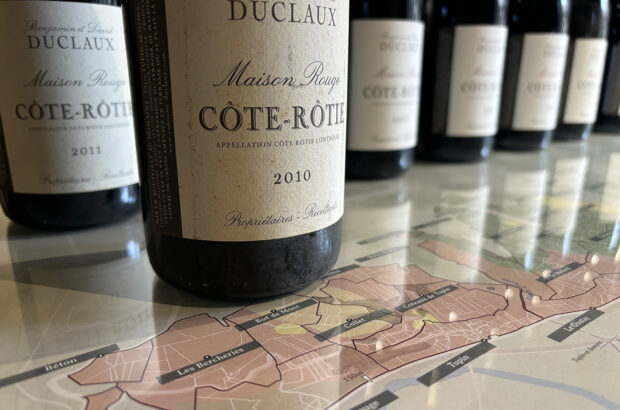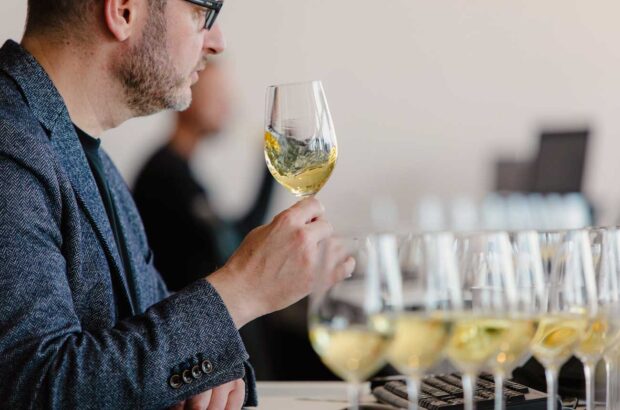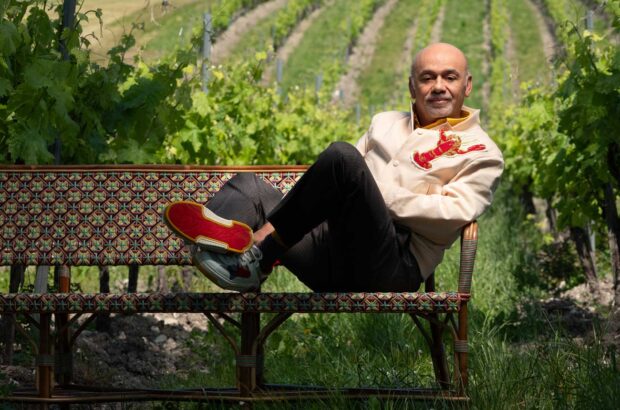In the Pacific Northwest, Washington state’s 2023 wine harvest is getting underway, while those in the cooler Willamette Valley in Oregon bide their time.
Harvest 2023 begins in Washington
Harvest 2023 has begun in the Evergreen State, depending on the site. Growers are largely picking for either sparkling wine or early-ripening white varietals like Sauvignon Blanc and Chardonnay.
‘Harvest is just getting underway,’ reported Gilles Nicault, the director of winemaking for Long Shadows. ‘We picked Sauvignon Blanc from a 1972 block at Bacchus Vineyard (White Bluffs AVA) on 29 August and will pick Stone Tree Vineyard Syrah from the Wahluke Slope on 6 September.’
Elsewhere in the state, winemakers are making preparations for a harvest just around the corner.
‘We anticipate picking Sauvignon Blanc from Novelty Hill’s estate vineyard, Stillwater Creek in the Royal Slope AVA, right after Labor Day, said Mike Januik, winemaker at Januik and Novelty Hill wines. ‘This is quite a bit earlier than last year, but 2022 was late by a couple of weeks.’
Budbreak in Washington was spotted in the Walla Walla Valley in late April. It was a cool spring in Washington state, but things heated up considerably in May. The hot days pushed 2023’s cool start, which was tracking two to three weeks behind towards more recent norms, with bloom seen across the state’s vineyards around 23 May.
After back-to-back unusual vintages, winemakers look forward to the kind of vintage that they’ve come to expect in Washington state.
A more ‘typical’ year
‘It’s been nice to have a “typical” Washington state growing season after more extreme conditions the last few years,’ said Amy Alvarez-Wampfler, winemaker and general manager at Walla Walla’s Abeja.
‘The weather hasn’t been too hot or cold, and there hasn’t been much rain. That’s quite different from the previous years. 2021 was the year of the heat dome. It was warm, dry, and a little windy, which concentrated the fruit. The berries were smaller, and yields were down 15-30% depending on the vineyard. In many ways, last year was the mirror-opposite.
‘In 2022, yields were up 20-30%, depending on the vineyard, and it was a late harvest. We started picking Chardonnay towards the end of September last year, and we brought in our last grapes around mid-November.’

Gilles Nicault. Credit: Long Shadows Vintners.
Forecasting a promising vintage
Despite a cool start, the 2023 vintage has rebounded surprisingly. With relatively low yields expected, Washington winemakers anticipating a year of intensity and concentration.
‘The growing season started at least three weeks later than usual, and we are now looking at one of the earliest harvests in my memory,’ said Nicault.
‘Low yields and ideal growing temperatures have boosted perfect ripening, with the grapes achieving beautiful physiological maturity with vibrant character, colour and aromatics.’
After a vintage of copious yields last season, Washington state is expecting a smaller crop in 2023.
‘The crop is significantly smaller this year than in 2022. I’m anticipating intense flavours in 2023 and even ripening,’ Januik said. ‘If the weather holds, we should be wrapped up by the first half of October, perhaps as early as 10 October because of a low crop load.’
‘We believe the fruit quality this year will be excellent,’ added Alvarez-Wampfler. ‘The canopies are even, the vines are well-balanced, and the berries and clusters are small. We did some heavy thinning this year.
‘Last year was a big crop. We anticipate yields will be down by about 20% this year. We won’t start picking fruit at Heather Hill until mid-October. It’s always one of the last vineyards we pick.’
Anticipation builds in Oregon
The Willamette Valley got off to a very slow start in 2023, but things got unusually warm in May with a few days of 32°C (91°F) temperatures. This early heat spike got things moving along quickly.
‘We’ve had a pretty compressed growing season, said Willakenzie winemaker Erik Kramer. ‘But the weather has been pretty cooperative since.
‘The timing between bud break and bloom was very short due to a warm spring, something like 10 days shorter than longer-term averages. Additionally, we had some heat roll through the area in August that seems to have advanced the calendar by a few days.’
The vintage has many thinking of warm years like 2018, 2015 and 2016 when fruit was ripe, and the wines were very approachable in their youth.
‘So far so good, the crop is looking very healthy,’ said Anne Sery, winemaker at NW Wine Company. ‘A quite late bud break was balanced by a warm summer.
‘The end of August looks to be cool, and the bits of rain and cooler days will help slow down the sugars, allowing the tannins to ripen and the skins to thicken. Right now, it reminds me of a combination between 2018 and 2015.’
Sery added, ‘I say 2018 for comparable degree days and 2015 for its hot and dry July and August. In 2018 when September came, we were all expecting to pick early, but it ended up taking a few weeks, and we didn’t really start until the third week of September.’

Anne Sery of NW Wine Company. Credit: CWK Photography
Clusters and complexity
In a region known for producing wines of balance and complexity, a warm vintage may mean different things for winemakers when it comes to picking decisions.
This is particularly salient for house styles based on freshness of fruit, floral character and minerality. Yet complexity can come from a variety of sources.
‘It was a similar start in 2016,’ said Ken Kupperman, vice president of vineyard operations for Jackson Family Wines, Oregon.
‘The clusters were very non-uniform in size this year, even within the same block, which may add some complexity to the wines. This has been a dry and warm year, but canopies have remained healthy. At this point, the season is going into its final phase now, and we’re seeing a cooling trend in the forecast. It’s shaping up very well, perhaps will wrap things up by the end of the first week in October.’
The way things are tracking, winemakers anticipate generous wines with ample fruit character.
‘These wines will certainly show some nice fruit. If the wines are anything like 2016, and I believe they are. They’ll be very fruit-forward and approachable early,’ shared Kate Ayres, PennerAsh winemaker. ‘Yet with so much variability within the blocks, we should see some interesting complexity.’







